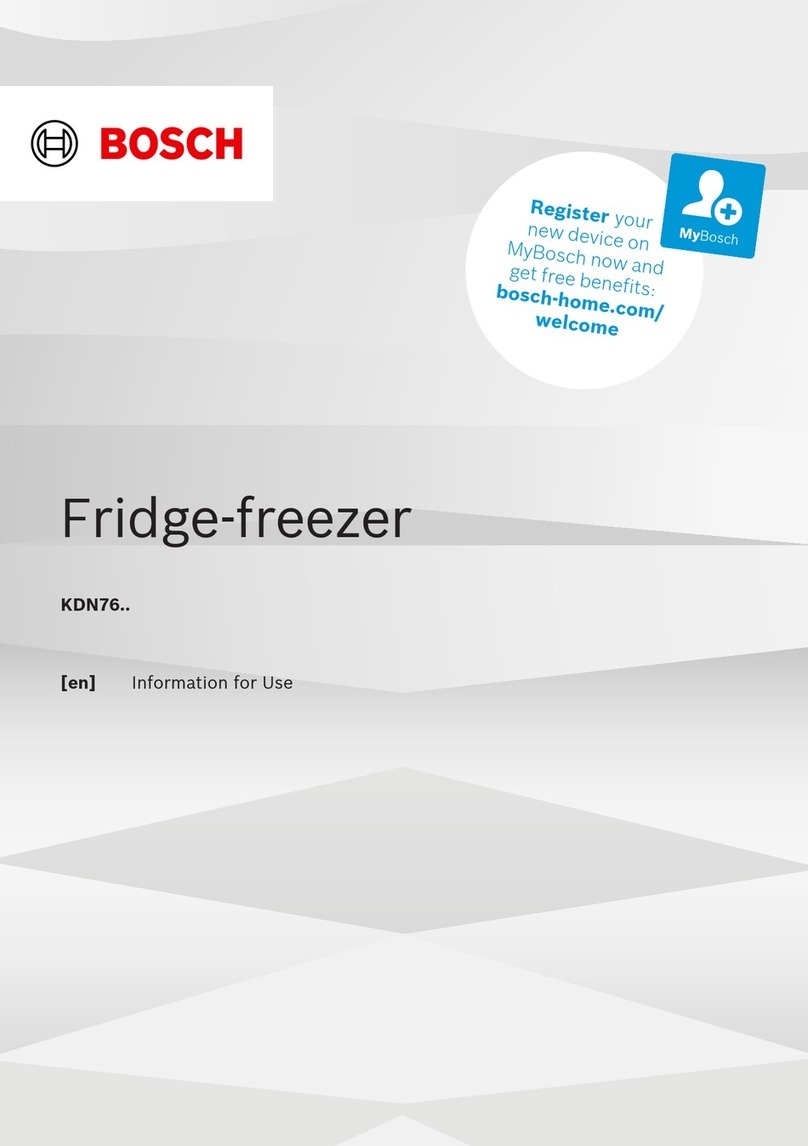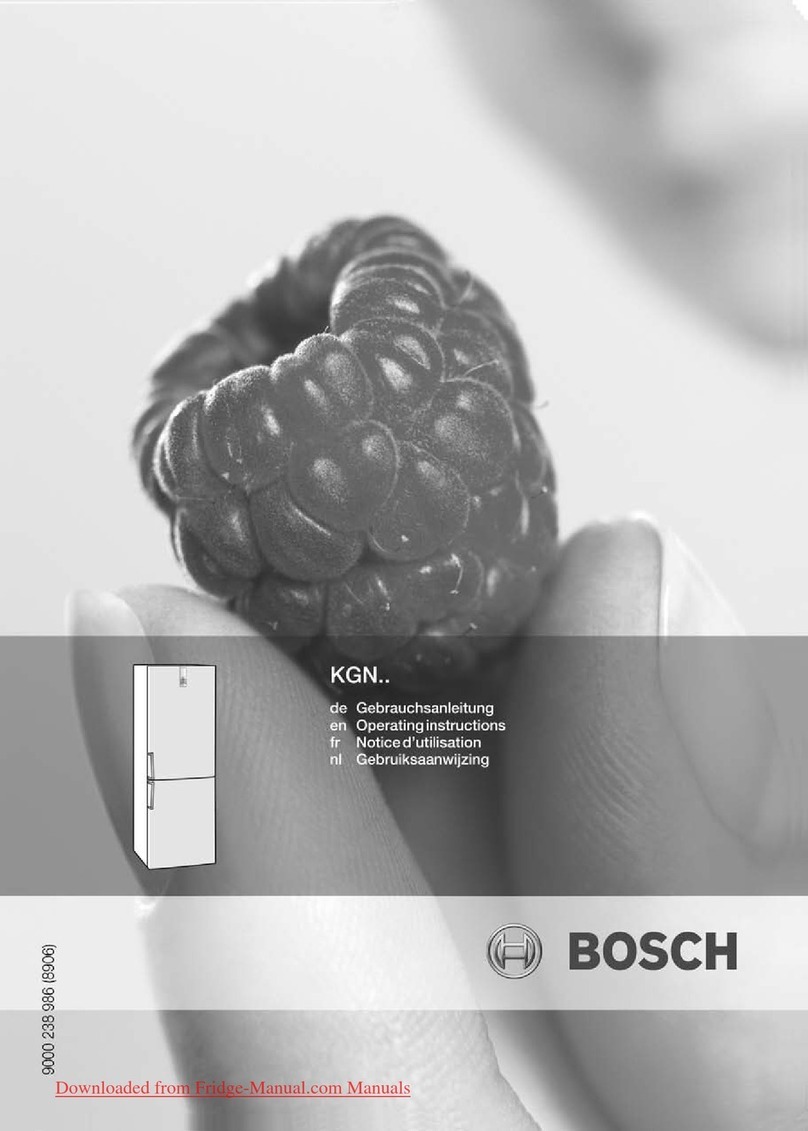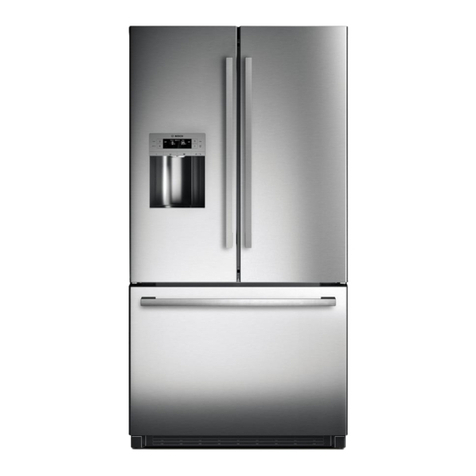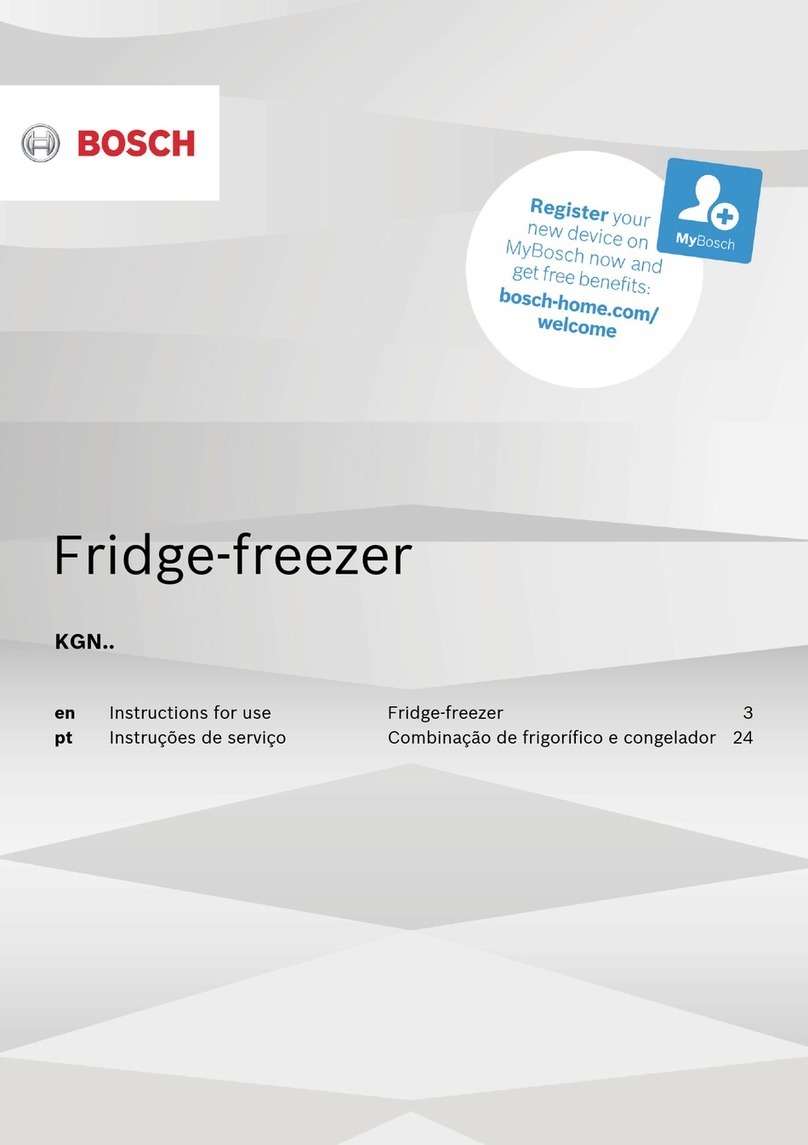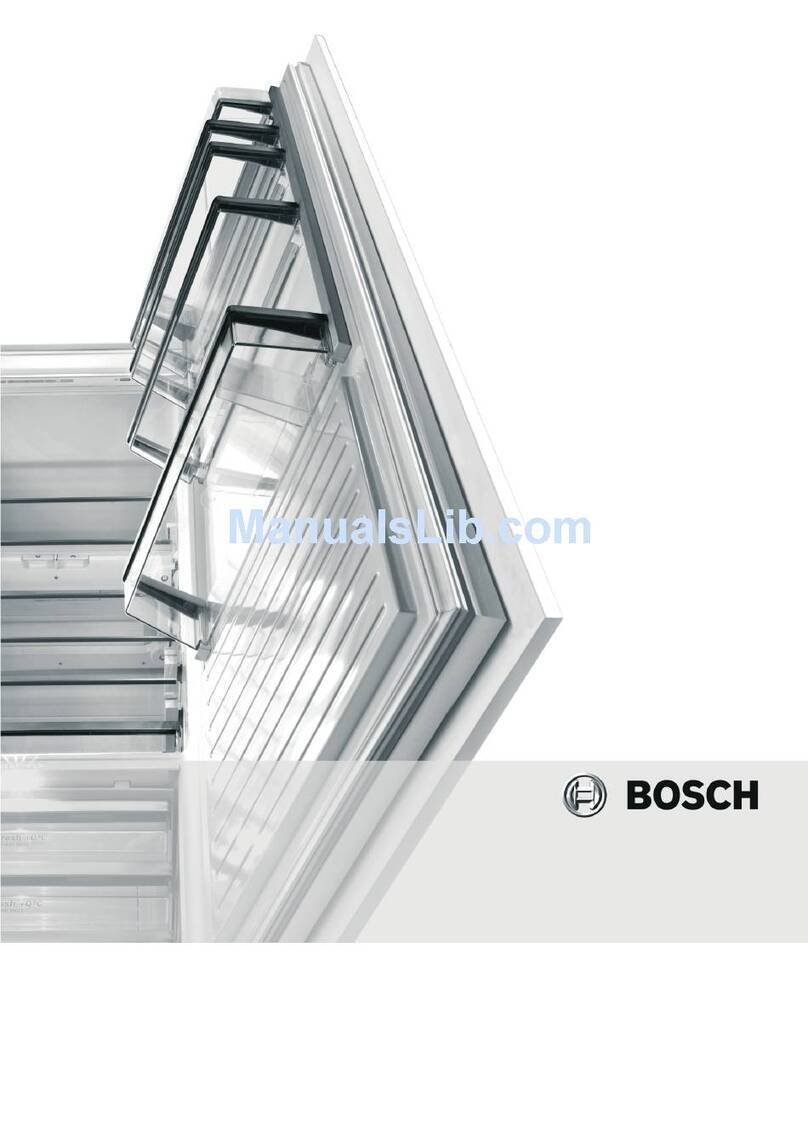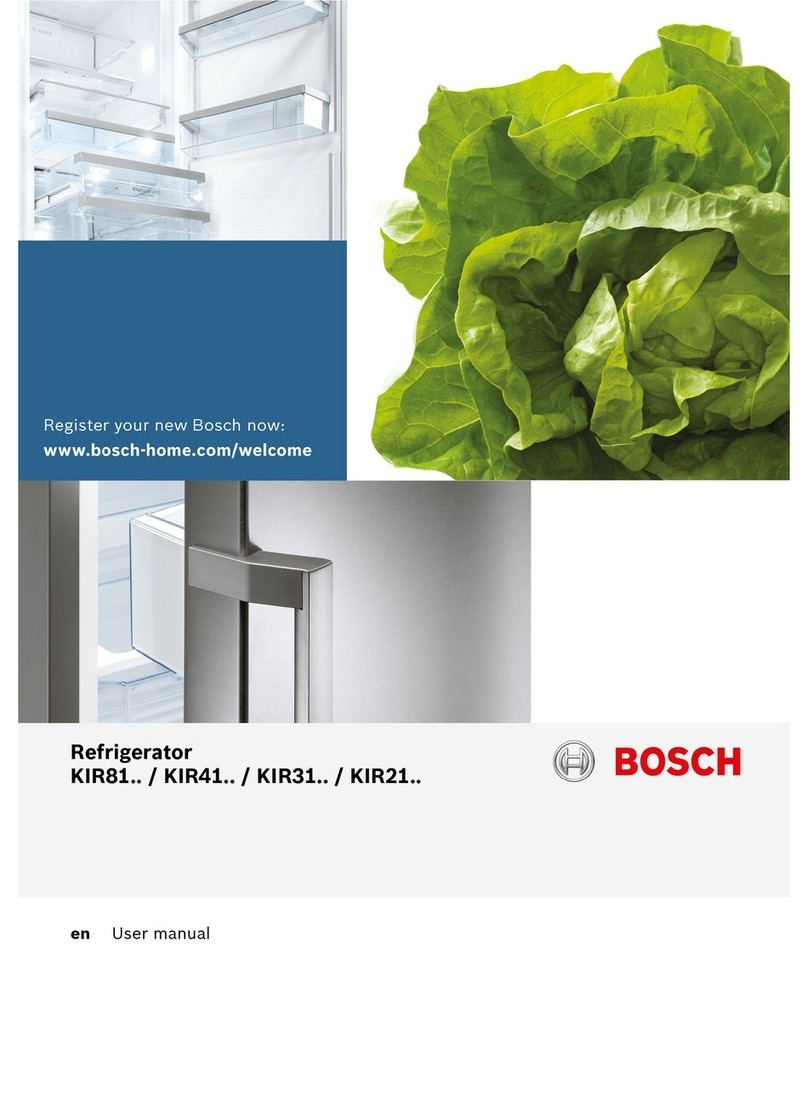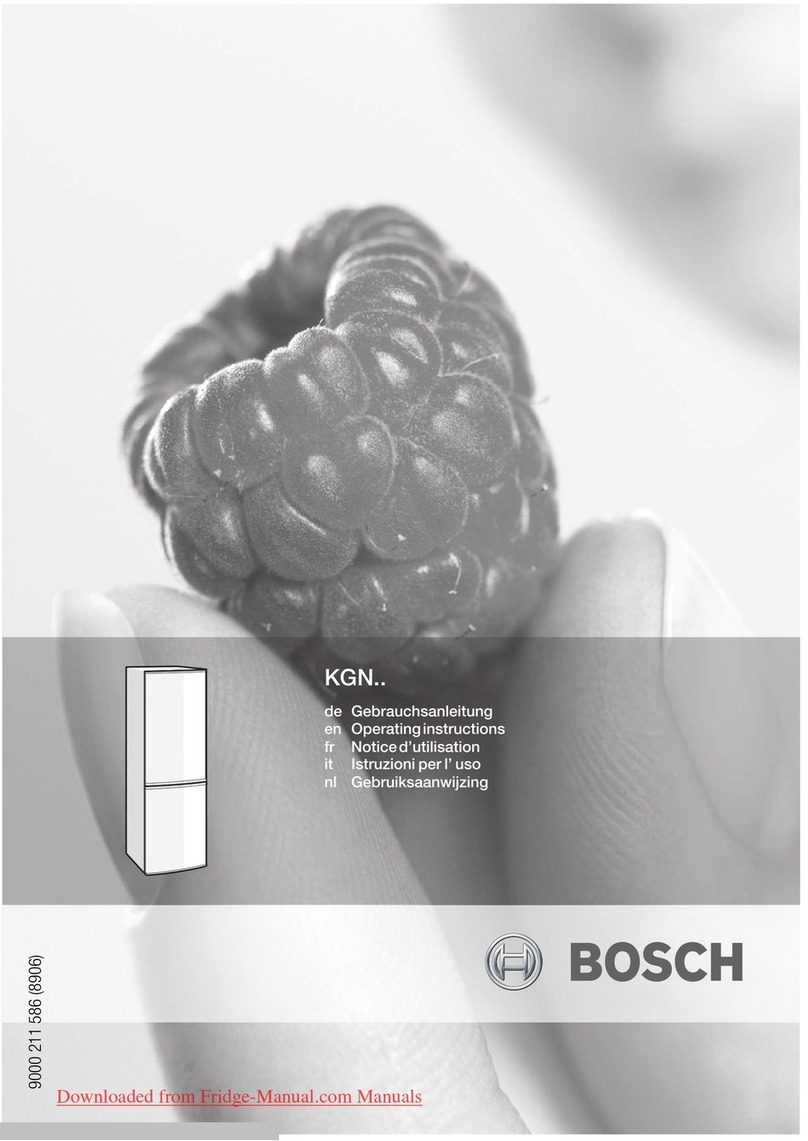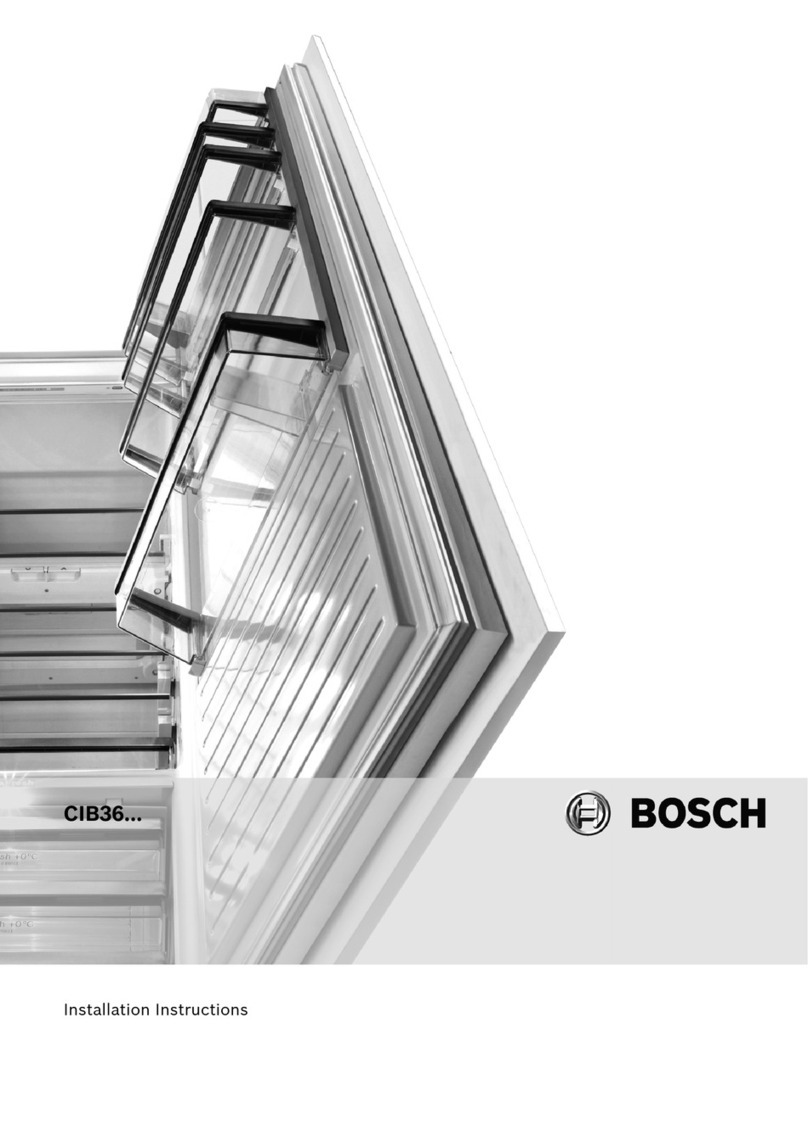173_58300000002379_ara_en_j.doc – 29.04.14 Seite 4 von 41
2.2 Check list for installation faults
Observe the ventilation dimensions in the installation
instructions. The air duct must not be obstructed. Non-
observance will impair the refrigeration circuit!
Observe the following points:
1. Maximum permitted weights of the furniture fronts:
Appliances with 2 cup hinges 9 kg
Appliances with 3 cup hinges 15 kg
Appliances with 4 cup hinges 18 kg
Appliances with flat hinges
The max. load for a flat hinge pair is 45 kg. This includes the
appliance door, the load of the door compartments and the
front panel.
Appliances with cushioned flat hinges
The max. load for a cushioned flat hinge pair is 62,5 kg. This
includes the appliance door, the load of the door
compartments and the front panel.
In this case, cushioned means that the hinge closes by itself
very slowly from an opening angle of 20°.
2. The transportation reinforcing strut in the rear area of the
kitchen furniture has not been removed. The rail prevents the
appliance from being inserted and the appliance protrudes
slightly.
3. The socket (surface type) is situated in the area of the motor
compartment. As a result, the refrigerator cannot be inserted
all the way either. The heat dissipated by the condenser and
the compressor may be impeded. Heat will build up and impair
the refrigeration circuit.
4. The screw in the upper installation strip brushes against the
cover panel on the built-under cupboard. The cause of this
fault are incorrect cup bores or an inaccurately dimensioned
mounting rail fitted to the front panel
5. The front panel is lopsided and brushes against the kitchen
furniture. Re-adjustment is possible only by removing the front
panel and correctly installing the mounting rail.
6. In isolated cases the cover base is missing from the built-in
cupboard. On the upperside of the appliance the cover plate
can be screwed only to the cupboard panel at the front. The
wood is tearing at this location, the screws slacken and the
appliance is no longer in the correct position.
7. The upper cupboard panel was not installed correctly and
therefore brushes against the front panel.
8. A blocked condensation outlet causes water to collect and run
out of the appliance at the front. The furniture base weakens
and the appliance moves up or down. The only remedial
action is to replace the furniture base.
9. If the appliance has been installed too deeply on the handle
side, the front panel strikes the carcass and the door does not
close. If this fault occurs, the depth has not been adjusted on
the appliance foot or has been adjusted too far at the rear.
We recommend a 50 cm wide spirit level and a try square as tools for
checking the correct installation location.

